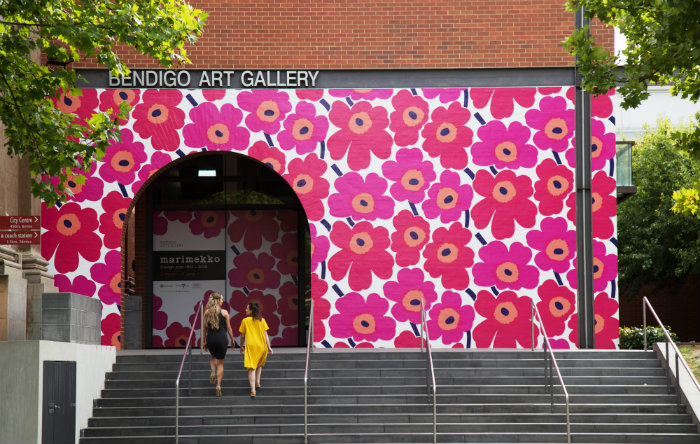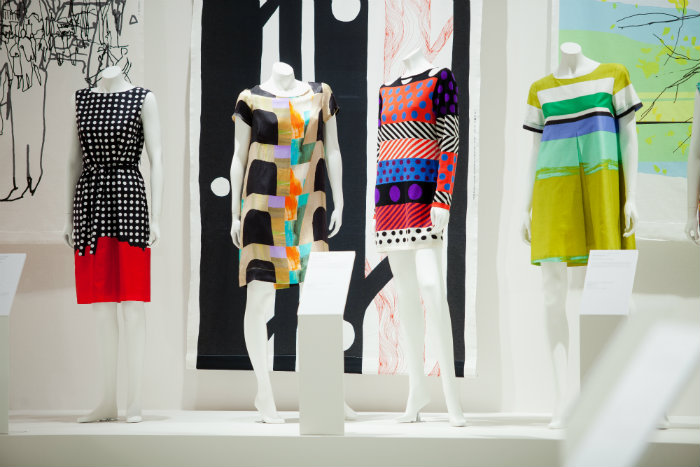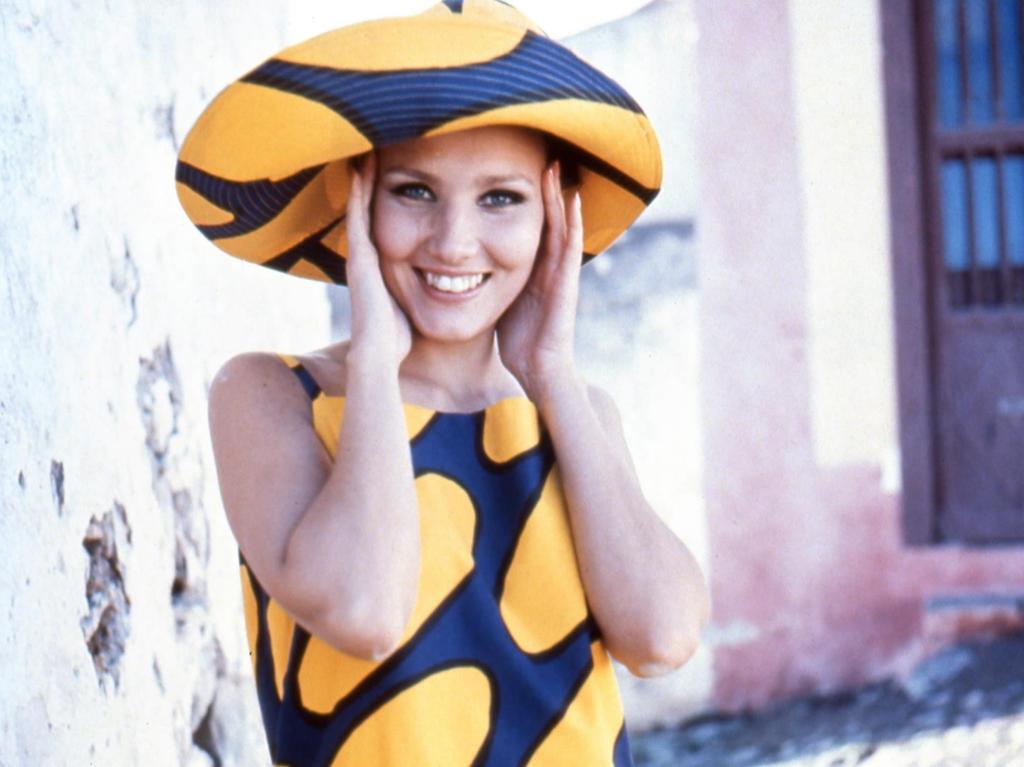Finnish fashion and textile house Marimekko makes art for the everyday; its designs are celebrated in a new exhibition at Bendigo Art Gallery.
By its nature, fashion is usually ephemeral. Collections are designed to be obsolete – unfashionable – the moment the next season’s designs are released.
Not so the colourful works of Finnish textile house Marimekko, celebrated in a new exhibition at Bendigo Art Gallery.
Marimekko (from the Finnish ‘Mary-dress’) was established in Helsinki in 1951 by husband and wife team Viljo and Armi Ratia, who aimed to make dresses for everyday women. By the time style icon Jacqueline Kennedy was pictured wearing the company’s youthful, colourful designs a decade later, Marimekko had become an internationally feted brand.
‘You may not know the name Marimekko but you’ll certainly have a visual connection to it, a visual memory – whether it’s your mother’s curtains from the 1970s or something visually linked to the social revolution of the 1960s,’ explained Leanne Fitzgibbon, Senior Curator, Programs and Access at Bendigo Art Gallery.
Even today the company’s designs remain popular. In 2014, Marimekko commemorated the 50th anniversary of one of their most popular pieces, artist Maija Isola’s iconic Unikko (‘Poppy’), by reinterpreting and re-releasing the design in consultation with the artist’s daughter and granddaughter.
‘Marimekko decided to celebrate the 50-year anniversary of Unikko by re-releasing the pattern, and often what Marimekko will do with pattern and design is they will re-interpret it – they will change the size of the motif, they will change the colour, they will morph it so that it’s something new and fresh again,’ said Fitzgibbon.

Image supplied
The popularity of the reimagined Unikko design speaks to Marimekko’s timelessness, Fitzgibbon said. ‘Maybe what we love about Marimekko is that it is anti-fashion – it is about timelessness and joy and incorporating the visual arts into everyday life.’
Learn more about Marimekko: Design Icon 1951 to 2018
Established as a clothing company, Marimekko soon expanded into interior design, with the company’s bold and colourful creations – created in collaboration with a diverse range of textile artists, graphic designers and fine artists – appearing on everything from tablecloths to toys and dinnerware.
‘You can have it as your curtains; you can have it as a banner on the wall; you can have it cup as you drink your morning coffee and it’s about bringing joy and that celebration of design and of the visual arts into every aspect of life. And that was really Armi Ratia’s creative vision for Marimekko – it was about timeless design and bringing joy to everyday moments,’ Fitzgibbon said.
Marimekko: Design Icon 1951 to 2018 is an extensive exhibition, with more than 60 garments on display.
‘There’s a strong focus on the original fabrics, so they’re displayed as banners, either suspended from the ceiling or the walls; they’re very high-impact pieces,’ said Fitzgibbon.

Image supplied
‘There are many of the original designs, works on paper painted by the artists and designers working with Marimekko. There are original fabric swatches showing the enormous colour variations possible, because of cause Marimekko created the designs and printed their own fabric, so they had this holistic control and they still do, over what they produce.
‘We’ve also got some fabulous archival material – images of Jackie Kennedy for example, and there are a couple of Jackie Kennedy dresses on display in the exhibition as well – right through to the celebration of Unikko, the poppy pattern and contemporary garments made for the runway.’
Marimekko’s designs became virtually synonymous with flower power and the youth revolution of the 1960s, but the company was revolutionary in other ways.
‘Armi Ratia was incredible – a female CEO in a man’s world in the 1950s – she was an extraordinary woman. She was able to bring together a diverse range of creative people to produce incredible designs that would be hopefully complementing every aspect of everyday life – that was her big vision at the time – and to see that it has this continuity and that there is a connection for a contemporary audience, I think that is quite amazing,’ said Fitzgibbon.
Marimekko: Design Icon 1951 to 2018
Bendigo Art Gallery
3 March – 11 June 2018
www.bendigoartgallery.com.au





